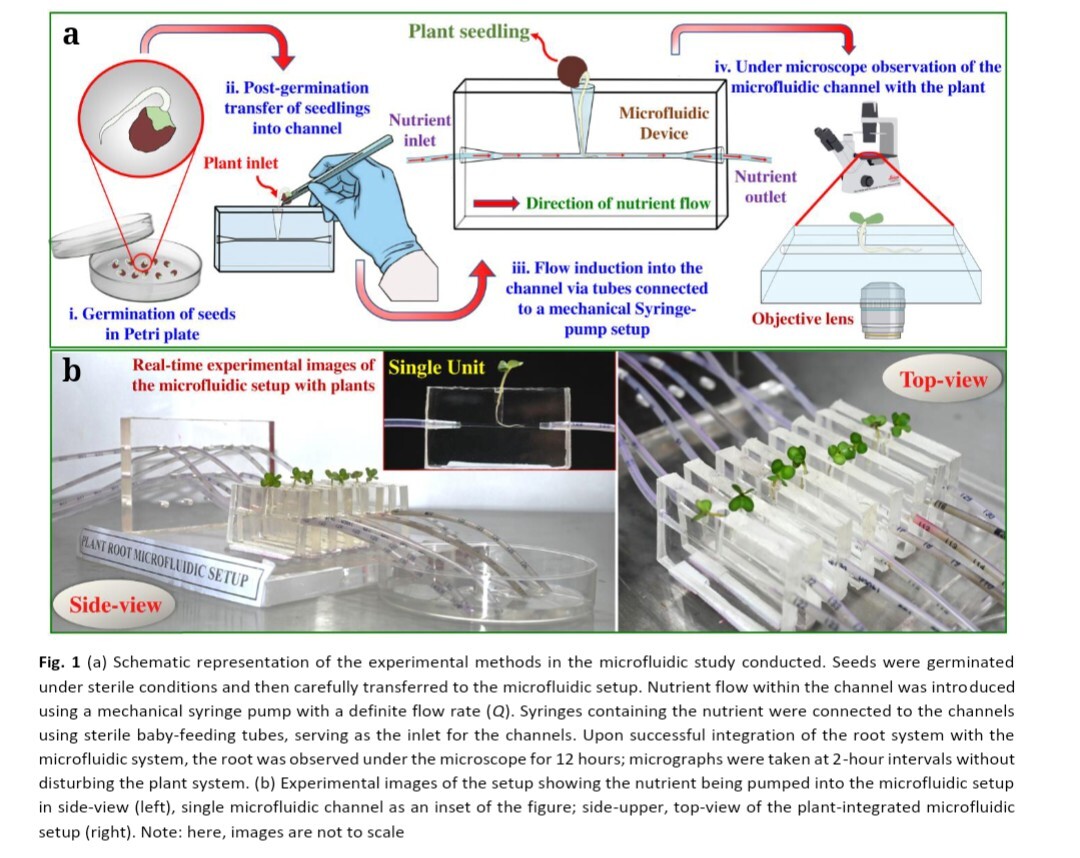1
The initial emergence of the primary root from a germinating seed is a pivotal phase that influences a plant's survival. Abiotic factors such as pH, nutrient availability, and soil composition significantly affect root morphology and architecture. Of particular interest is the impact of nutrient flow on thigmomorphogenesis, a response to mechanical stimulation in early root growth, which remains largely unexplored. This study explores the intricate factors influencing early root system development, with a focus on the cooperative correlation between nutrient uptake and its flow dynamics. Using physiologically relevant, portable, and cost-effective microfluidic system for the controlled fluid environments offering hydraulic conductivity comparable to that of the soil, this study analyzes the interplay between nutrient flow and root growth post-germination. Emphasizing the relationship between root growth and nitrogen uptake, the findings reveal that nutrient flow significantly influences early root morphology, leading to increased length and improved nutrient uptake, varying with the flow rate. The experimental findings are supported by stress-related fluid flow-root interaction simulations and quantitative determination of nitrogen uptake using the Total Kjeldahl Nitrogen (TKN) method. The microfluidic approach offers novel insights into plant root dynamics under controlled flow conditions, filling a critical research gap. By providing a high-resolution platform, this study contributes to the understanding of how fluid-flow assisted nutrient uptake and pressure affect root-cell behavior, which, in turn, induces mechanical stress leading to thigmomorphogenesis. The findings hold implications for comprehending root responses to changing environmental conditions, paving the way for innovative agricultural and environmental management strategies.

You must log in or register to comment.

